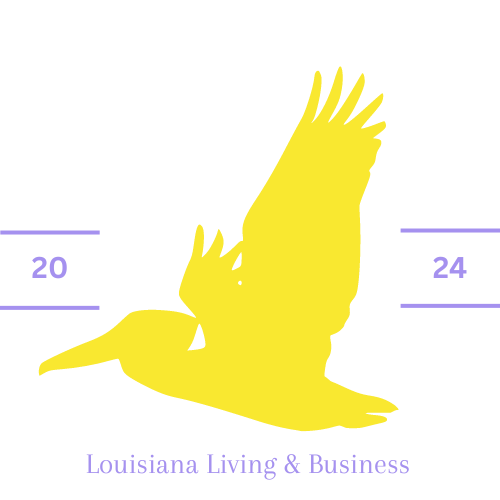Where the Gulf Meets Industry, Wildlife, and Wide Open Skies
Cameron Parish is a truly unique region in Southwest Louisiana, where natural beauty, energy production, and wildlife conservation converge along the Gulf Coast. It is one of the largest parishes in Louisiana by land area, yet it remains one of the most peaceful and sparsely populated—offering vast coastal landscapes, bountiful wetlands, and tremendous economic potential.
From world-class birding and fishing to its status as a major player in the energy sector, Cameron Parish is where Louisiana’s wild coastal spirit meets global industry.
Where Is Cameron Parish Located?
Cameron Parish is located in the far southwest corner of Louisiana, bordered by:
-
Calcasieu Parish to the north
-
Vermilion Parish to the east
-
Jefferson County, Texas to the west
-
The Gulf of Mexico to the south
It is accessible via Louisiana Highways 27 and 82, with ferry crossings over bayous and waterways that preserve the natural flow of the landscape.
Towns and Communities in Cameron Parish
Cameron Parish has no incorporated cities, but several tight-knit, unincorporated communities spread across the parish make up its civic and cultural backbone:
-
Cameron (Parish Seat) – Located along the Calcasieu Pass, Cameron is home to government offices, a port, and direct access to Gulf energy operations.
-
Hackberry – Known for hunting, fishing, and its connection to the Sabine National Wildlife Refuge and major LNG facilities.
-
Creole – A low-lying agricultural and marshland area with strong coastal heritage.
-
Grand Chenier, Johnson Bayou, and Big Lake – Rural, coastal communities known for fishing camps, cattle ranches, and outdoor recreation.
Despite its sparse population, these communities are deeply connected to coastal resilience, family legacies, and resource-based industries.
What Is Cameron Parish Known For?
Cameron Parish is known across the region for:
-
Massive energy infrastructure, including LNG (liquefied natural gas) export terminals and petrochemical facilities
-
Unmatched wildlife and birding opportunities
-
Commercial and recreational fishing
-
Creole Nature Trail (All-American Road)
-
Cattle grazing on coastal prairie
-
A proud, resilient culture rooted in the land and sea
Industries in Cameron Parish
1. Energy and Petrochemical
Cameron Parish is a global hub for energy exports, playing a vital role in international energy markets.
-
Liquefied Natural Gas (LNG) Terminals
-
Cheniere Energy – Sabine Pass LNG
-
Venture Global LNG
-
-
Oil and Gas Production
-
Both onshore and offshore facilities operate throughout the region.
-
-
Industrial Support Services
-
Maritime support, pipeline infrastructure, and logistics for heavy industry.
-
-
Port of Cameron – One of Louisiana’s southernmost ports, strategically located for shipping and offshore access.
2. Maritime and Logistics
-
Tugboat operations, barge service, and offshore supply are crucial to Cameron’s economic infrastructure.
-
The Calcasieu Ship Channel and intracoastal waterways keep this region globally connected.
Agriculture in Cameron Parish
Agriculture in Cameron is uniquely adapted to its wet, marshy, and flat terrain, making it a coastal ranching and aquaculture powerhouse.
-
Cattle Grazing
-
One of the few coastal areas in the U.S. where cattle ranching happens alongside marshland.
-
Cow-calf operations are common on the open prairies near Grand Chenier and Big Lake.
-
-
Rice and Marsh Grass
-
Some land is used seasonally for rice or to grow native grasses for livestock and soil conservation.
-
-
Crawfish and Aquaculture
-
Commercial fishing and crabbing still support many local families and markets.
-
-
Shellfish Harvesting
-
Shrimp, oysters, and blue crabs are staples of both the economy and culture.
-
Tourism & Outdoor Recreation in Cameron Parish
Cameron Parish is a hidden gem for ecotourism, sportsmen, and nature lovers. With its remote beauty and pristine coastline, this is a place for people who want to truly escape and connect with nature.
Creole Nature Trail All-American Road
-
A nationally recognized scenic byway that winds through marshes, wildlife refuges, and Gulf beaches.
-
Popular for birdwatching, photography, and road trips.
-
Over 400 species of birds can be spotted here annually.
Holly Beach (“The Cajun Riviera”)
-
A public, drive-on beach on the Gulf of Mexico.
-
Offers swimming, surf fishing, shelling, and RV camping.
Sabine National Wildlife Refuge
-
Over 125,000 acres of protected wetlands, boardwalks, and scenic drives.
-
Great for fishing, hunting, and wildlife observation.
Hunting and Fishing Lodges
-
Hackberry and Johnson Bayou are popular bases for redfish, speckled trout, and duck hunting adventures.
-
Numerous outfitters, fishing guides, and lodges cater to year-round outdoor sports.
Local Events and Cultural Heritage
-
Cameron Fur and Wildlife Festival
-
Celebrates the local traditions of trapping, wildlife conservation, and coastal culture.
-
-
Seafood boils, music, and craft fairs celebrate the community’s resilience and Cajun spirit.
Why Cameron Parish Offers Exceptional Value
-
Unmatched access to Gulf Coast energy infrastructure
-
Large land parcels for agriculture, hunting, or development
-
Rich wildlife and ecotourism potential
-
Strategic shipping and maritime access
-
Quiet, resilient communities rooted in coastal tradition
Cameron Parish is ideal for:
-
Investors in energy, agriculture, and land
-
Outdoor enthusiasts and ecotourists
-
Families or retirees looking for peace and space
-
Business owners in logistics, offshore services, or nature tourism

